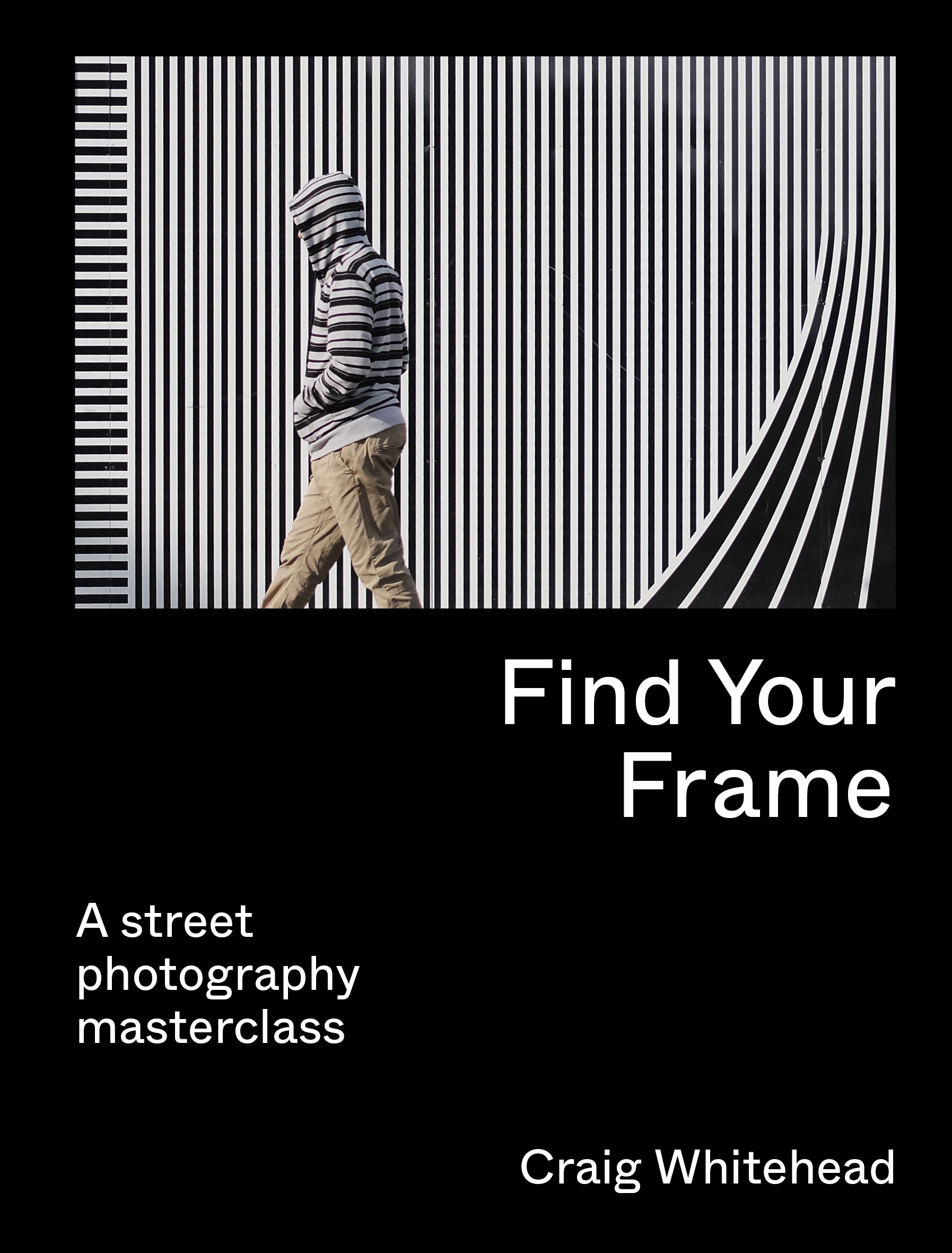The book, Find Your Frame: A Street Photography Masterclass features a forward by Kai Wong. The book, which costs $19.99 on Amazon is by Craig Whitehead unless you’re after the Kindle version. Just by browsing Craig’s website, you can find a bunch of photos that you’re bound to be inspired by. His images show beauty, irony, and color in ways that are only demonstrated by modern masters. Our readers were given an exclusive look at one of the chapters in the book for free. Please enjoy the chapter entitled Don’t be Shy down below.
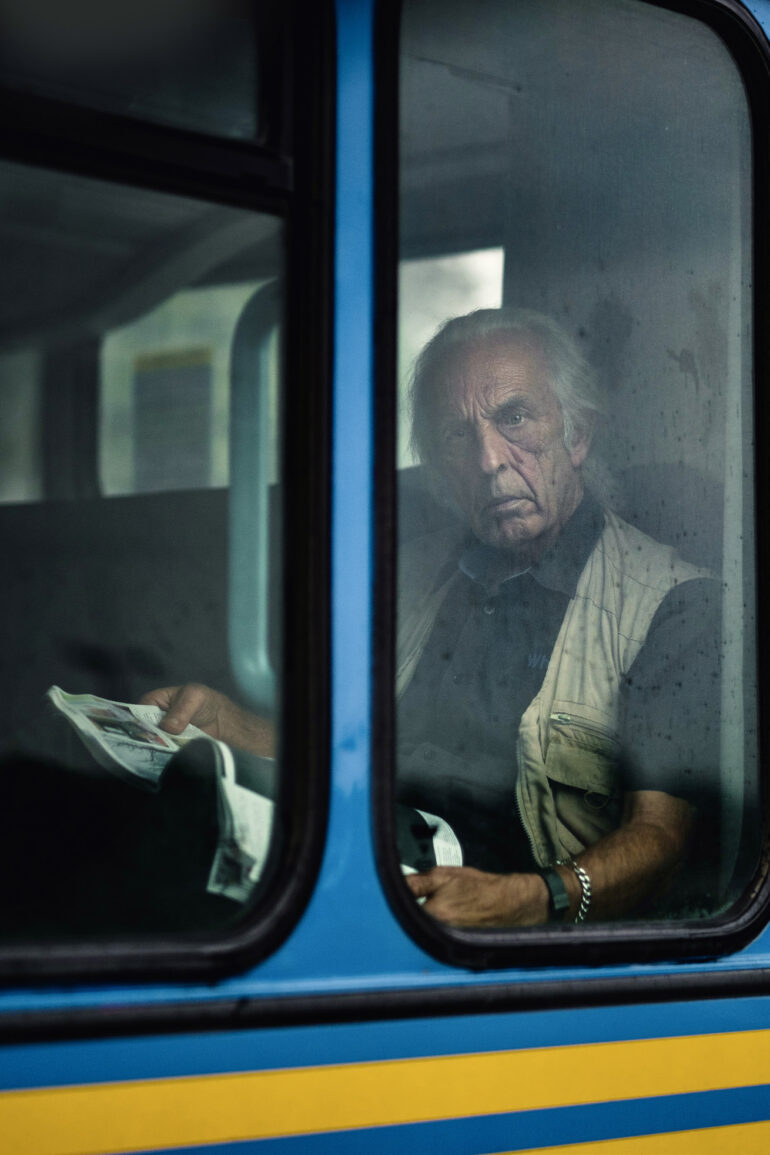
Don’t be shy
Excerpted from Find Your Frame by Craig Whitehead
Be confident and leave your inhibitions at home, they’ll only hold you back
There’s a feeling you sometimes have when you’re about to take a picture. Your stomach drops and you get a surge of adrenaline, a fight-or-flight response. You might experience it as a social anxiety. Your mind might start racing, firing off questions… What will that person think of me? How do I get myself into the right position without attracting attention? Is this a good idea? That is your brain telling you that you’re looking at something compelling, something you must photograph. It’s your cue to run forward and hit the shutter.
Whenever I do workshops, beginners always ask me how to deal with that awkwardness? Everybody goes through it at the start, but you must get past it. Anyone who’s been shooting on the street for a while will have faced a moment like this. If they’ve pushed through, they will have come out the other side a different photographer. Even if you don’t and then go on to specialise in photographing people, you know that in 10 years’ time if you see a rare and interesting scene involving a person or some people that you absolutely must capture, you’re not going to miss it out of shyness. Because you’ve made that leap already.
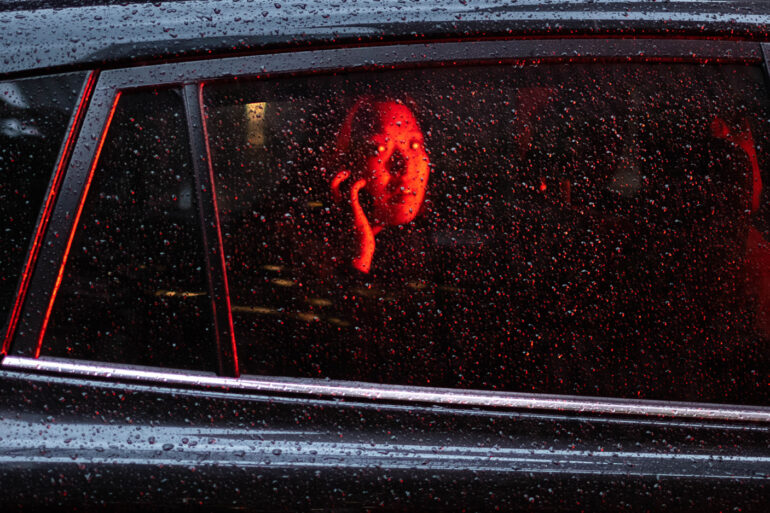
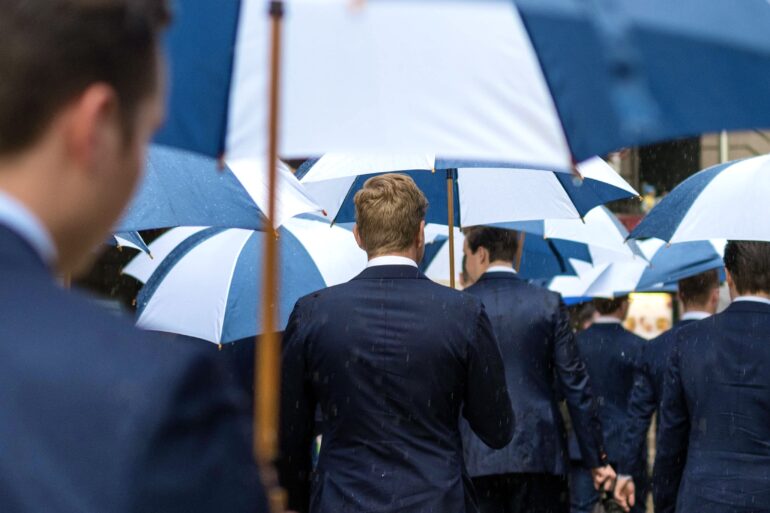
I remember my awkward moment. There was a bus driver staring daggers at me, straight into the lens. I was on my bike, on my way home from work, when I rode past him. I braked, jumped off and headed back. I’d made this agreement with myself earlier that if I pulled the brakes for even a split second thinking this might be a good shot, I had to stop. Otherwise, I knew I’d find myself stewing with regret. This was the first time I followed through on that. At the time, it’s like there are two parts of you battling it out – the photographer, who just wants the shot, and the human thinking, ‘This is going to be weird, uncomfortable or dangerous.’ If taking a shot is dangerous, you must listen to that instinct, but if it’s just uncomfortable, you have to get over it.
It could be, as in my case with the bus driver, a situation where you feel some hostility or it could just be tricky engineering yourself into the right spot to get the composition you want. For some pictures to work, you want the person to look directly into the lens, so you need to step forward and get their attention to make that happen. Know that the shot is worth more than a stranger’s opinion of you. They might just think, ‘Oh, that guy was weird. Who cares?’ In seven years of doing this, I’ve only ever encountered one person who was angry. I’ve only been asked to delete a picture on two occasions, and both times it was all very polite.
You need to understand the effect of your body language. Avoid looking casual or lazy – like having one hand in your pocket, for example. If you act as if you’re doing something wrong, people will respond to you as though that’s the case. A simple smile goes a long way – I’ve got a shot from New York where the entire frame is filled with guys in suits holding umbrellas. But there were two people with them who weren’t in suits and I didn’t want to include them in the picture because they’d detract from it. To get the shot, I positioned myself between them and the suits. I turned round, caught their eyes and smiled. They saw that it was an interesting scene, too, and when I was done, they even asked me for a copy.
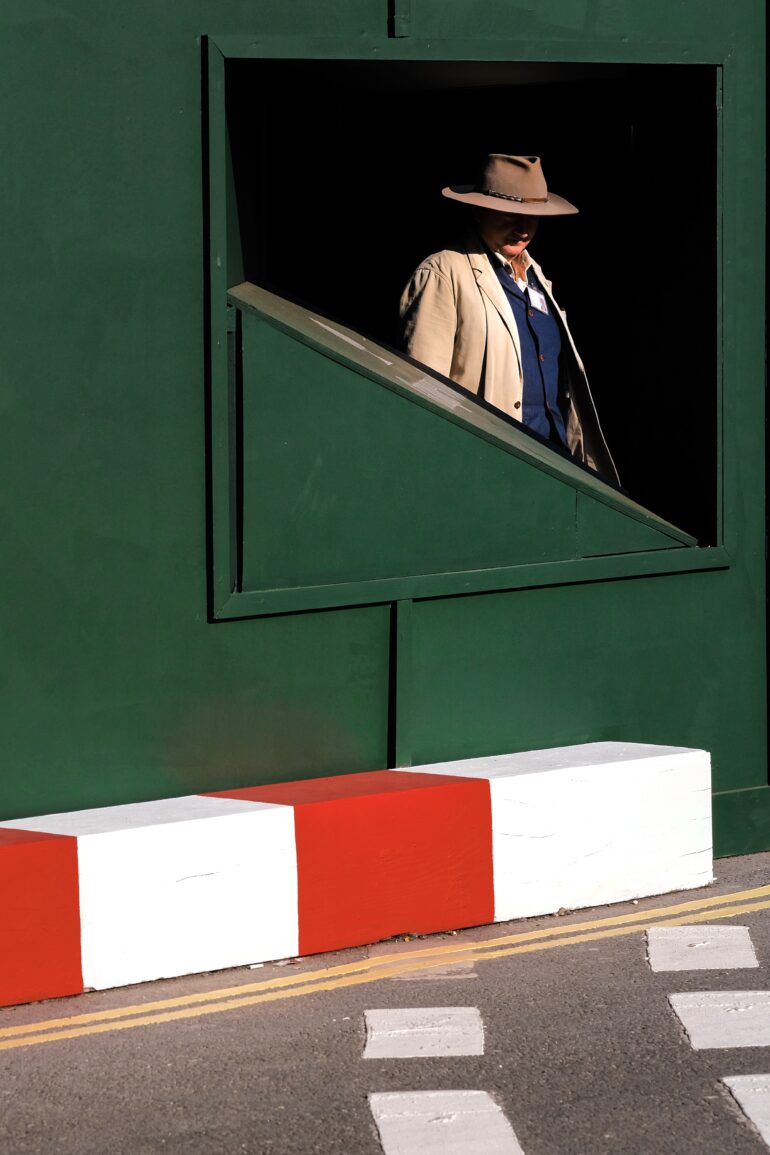
If there’s a stag do or similar going on, you’ll often find that one person in the group sees you taking the photo – but they’re in on the joke. They’re willing you on, thinking, ‘I want there to be a photo of this because it’s funny.’ And then you can get right into the frame. It’s about observing, interpreting any given situation and playing off that. But you can use all sorts of tricks. Occasionally, someone will spot that I’ve made eye contact with them accidentally while I’m getting an idea of what my composition is going to be and I don’t want them to be looking into the lens. But if I pick up the camera at that moment, that’s exactly what’s going to happen. So, I try to go incognito. I might walk past them, wait a few seconds and then double back on myself to quickly get the shot or I might get my phone out and hang there for long enough that I’ve melted into the background, almost becoming part of the street furniture. Once they forget you’re even there, you can take the shot and then off you go.
You can switch up the power dynamics, too. Say you frame up something so you’ve got your composition ready, and you’re waiting for someone to walk through to complete the shot. In this situation, people are aware of what you are doing and if they walk through, that’s their choice, so you can take as many shots as you want. But in some places, like the UK, people are inherently polite. You might be waiting for a subject to walk through your composition, but they see you with your camera, and stop, wary that they’re going to ruin the shot. In situations like this, I tend to drop the camera and give them a friendly grin to reassure them it’s okay for them to walk on. Then, the second they get level with me, I lift up the camera again and take the shot. That’s the easiest one when you’re starting out – framing up first and letting people walk through. There’s no risk there at all because it’s obvious what you’re doing.
Getting more confident on the street comes from spending time there. You don’t even need to have a camera with you. You can just walk around, watching the world. Athletes and gamers talk about being ‘in the zone’ and this is not so different. There’s a point at which you spend enough time in a space that you start understanding what’s about to happen and you can subconsciously pre-empt it. Eventually, you just get a gut feeling that makes you lift the camera at the right time and it all flows together.
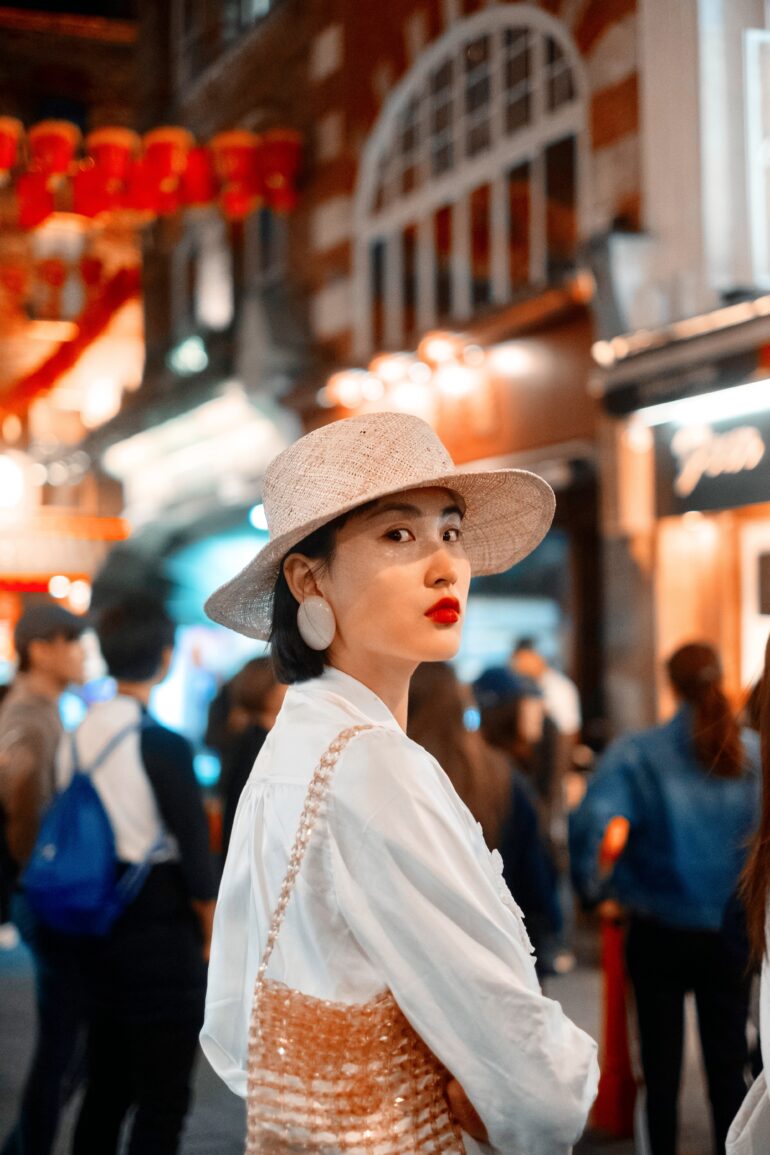
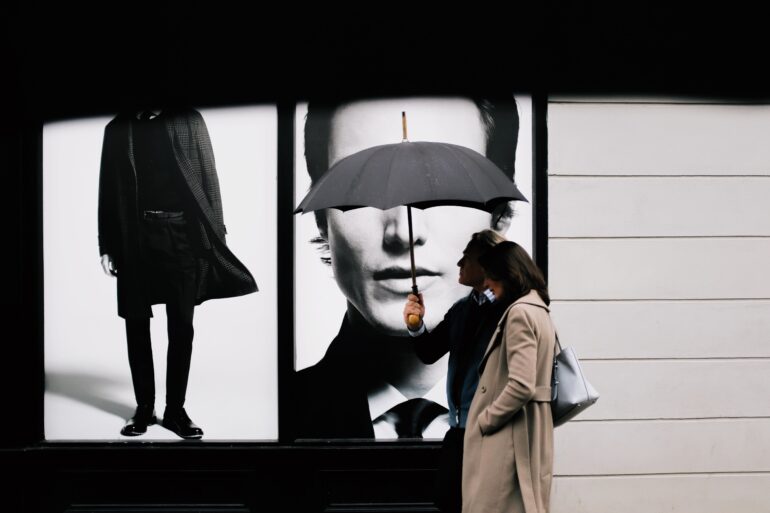
Craig Whitehead (@sixstreetunder) is a hugely experienced street photographer with a uniquely creative approach. Based in Cambridge, UK, but shooting internationally, his work focuses on color, composition and an innate sense of visual atmosphere.
Excerpted with permission from Find Your Frame: A Street Photography Masterclass (Frances Lincoln, an imprint of The Quarto Group, 2023) by Craig Whitehead. All photographs by Craig Whitehead. Find Your Frame publishes September 28, 2023 and can be purchased wherever fine books are sold. Learn more at quarto.com.


